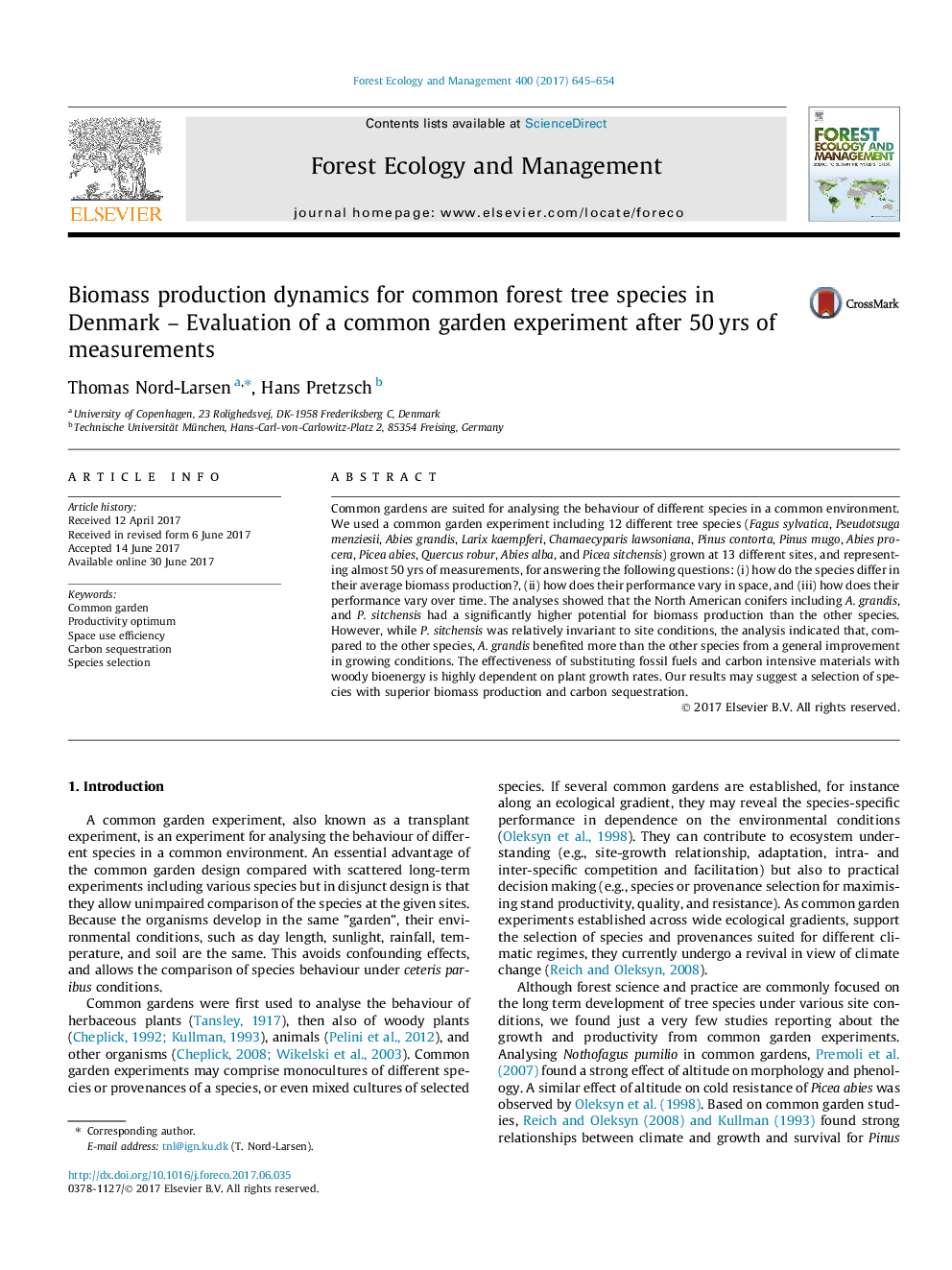| Article ID | Journal | Published Year | Pages | File Type |
|---|---|---|---|---|
| 6459315 | Forest Ecology and Management | 2017 | 10 Pages |
â¢A unique common garden experiment provides new insights to tree growth.â¢Tree species differ in biomass production and performance varies in space and time.â¢Some species benefited more than others from an improvement in growing conditions.â¢Results aid species selection for biomass production and carbon sequestration.
Common gardens are suited for analysing the behaviour of different species in a common environment. We used a common garden experiment including 12 different tree species (Fagus sylvatica, Pseudotsuga menziesii, Abies grandis, Larix kaempferi, Chamaecyparis lawsoniana, Pinus contorta, Pinus mugo, Abies procera, Picea abies, Quercus robur, Abies alba, and Picea sitchensis) grown at 13 different sites, and representing almost 50Â yrs of measurements, for answering the following questions: (i) how do the species differ in their average biomass production?, (ii) how does their performance vary in space, and (iii) how does their performance vary over time. The analyses showed that the North American conifers including A. grandis, and P. sitchensis had a significantly higher potential for biomass production than the other species. However, while P. sitchensis was relatively invariant to site conditions, the analysis indicated that, compared to the other species, A. grandis benefited more than the other species from a general improvement in growing conditions. The effectiveness of substituting fossil fuels and carbon intensive materials with woody bioenergy is highly dependent on plant growth rates. Our results may suggest a selection of species with superior biomass production and carbon sequestration.
